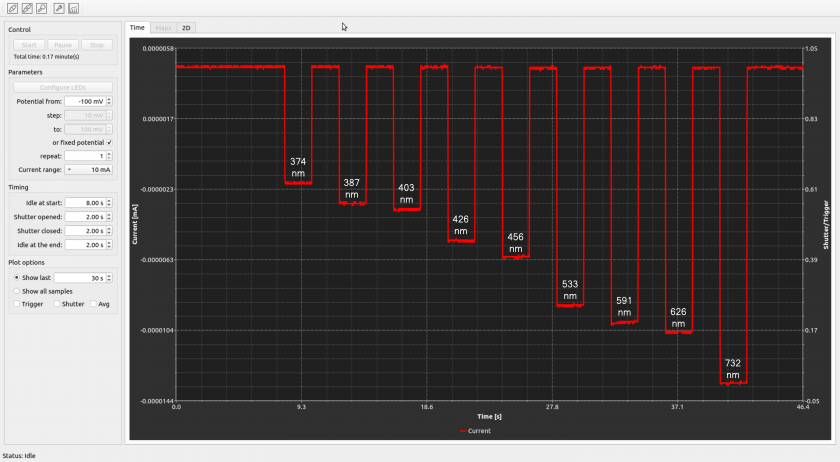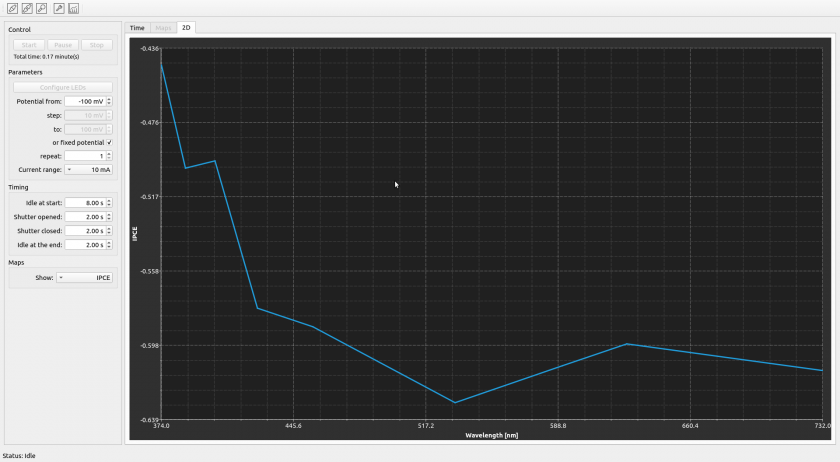Mini Photoelectric Spectrometer
The Mini Photoelectric Spectrometer is an entry level instrument into a Photo-Electro-Chemistry. It takes upon this role because it uses modest means, just a small potentiostat and a light source, to achieve variety of science grade investigations into light sensitive electrochemical samples.
Here I will demonstrate how easy it is to measure IPCE (Incident Photons to Converted Electrons ratio ) or EQE (External Quantum Efficiency).
The Light Source
The light source is simply our LED Revolver that is populated by 10 automatically changed LEDs. This particular instrument had the following LEDs mounted:
| Slot | Wavelength [nm] |
|---|
| 1 | 374 |
| 2 | 387 |
| 3 | 406 |
| 4 | 426 |
| 5 | 456 |
| 6 | 533 |
| 7 | 591 |
| 8 | 626 |
| 9 | 732 |
| 10 | White 2700 K |
For IPCE measurement I will use only monochromatic (first 9) LEDs.
The Sample
As a sample I decided to use a large 1 cm x 1 cm Hamamatsu S1337-1010BQ Si photodiode. The instrument can handle three electrode systems as well, but that particular photodiode has been calibrated by the manufacturer and its quantum efficiency was certified.
The Measurement
It has been decided to perform the IPCE measurement at the same light intensity for all used LEDs set at 50 µW.
The photodiode was reverse polarized at -100 mV.
Each of nine LEDs were turned on for 2 seconds and then a 2 second dark time was used to switch to the next LED.
The entire measurement took 40 seconds.
In the screen shot below you can see the time evolution of current running through the sample.

It starts at about 4 nA (ideally should start at 0 nA but due to a typical offset at the chosen 10 mA some non-zero dark current is possible) and after 8 s goes to -2 nA when the first 374 nm is switched on.
The measurement continues automatically until the last monochromatic LED at 732 nm is used.
The Result
The measured IPCE is readily available as a 2D plot

Notice that the IPCE values are negative. The IPCE can take values from [-1, 1] interval. The negative values mean that the photocurrent was negative. Indeed, when you follow electrochemical current convention by IUPAC, the negative current means that the diode is generating current in the reverse direction, as it should be.
Other than that the measured values deviate from the values in the certificate up to 3% points.
One can easily improve the measurement accuracy by using tighter current range of 100 nA.